The English Premier League is, without a shadow of a doubt, the most illustrious domestic competition in world football.
This has not necessarily translated to success on the international stage for England in recent years.
With that said, however, they were finalists four years ago in the 2020 tournament on home soil, although they were beaten by Italy.
Going into the 2024 version of the tournament, however, England are amongst the favourites, and the quality and depth of their squad celebrate the fact that the English FA has remodelled its approach to youth development, with a clear emphasis on developing technically skilled and versatile players.
As we head towards this tournament, it is easy to argue that England has had the best players in three of the top five leagues over the course of the season.
Phil Foden has been the best player in England for Manchester City, Jude Bellingham has been the best player in Spain for Real Madrid, and Harry Kane has been the best player in Germany for Bayern Munich.
All three are coming into this tournament in top form.
This will be England’s coach Gareth Southgate’s fourth tournament in charge.
Despite what some see as deficiencies on the tactical side of the game, he has created a reputation for strong showings in international tournaments.
This is largely because Southgate is an extremely modern and empathetic coach who creates harmony in the group during the long stays in hotels and training camps.
The goal for England has to be to win the tournament, given the talent at their disposal.
Our tactical analysis and team-focused scout report aims to provide some in-depth analysis of England’s tactics and what viewers can expect from them in this summer’s tournament.
England Starting XI
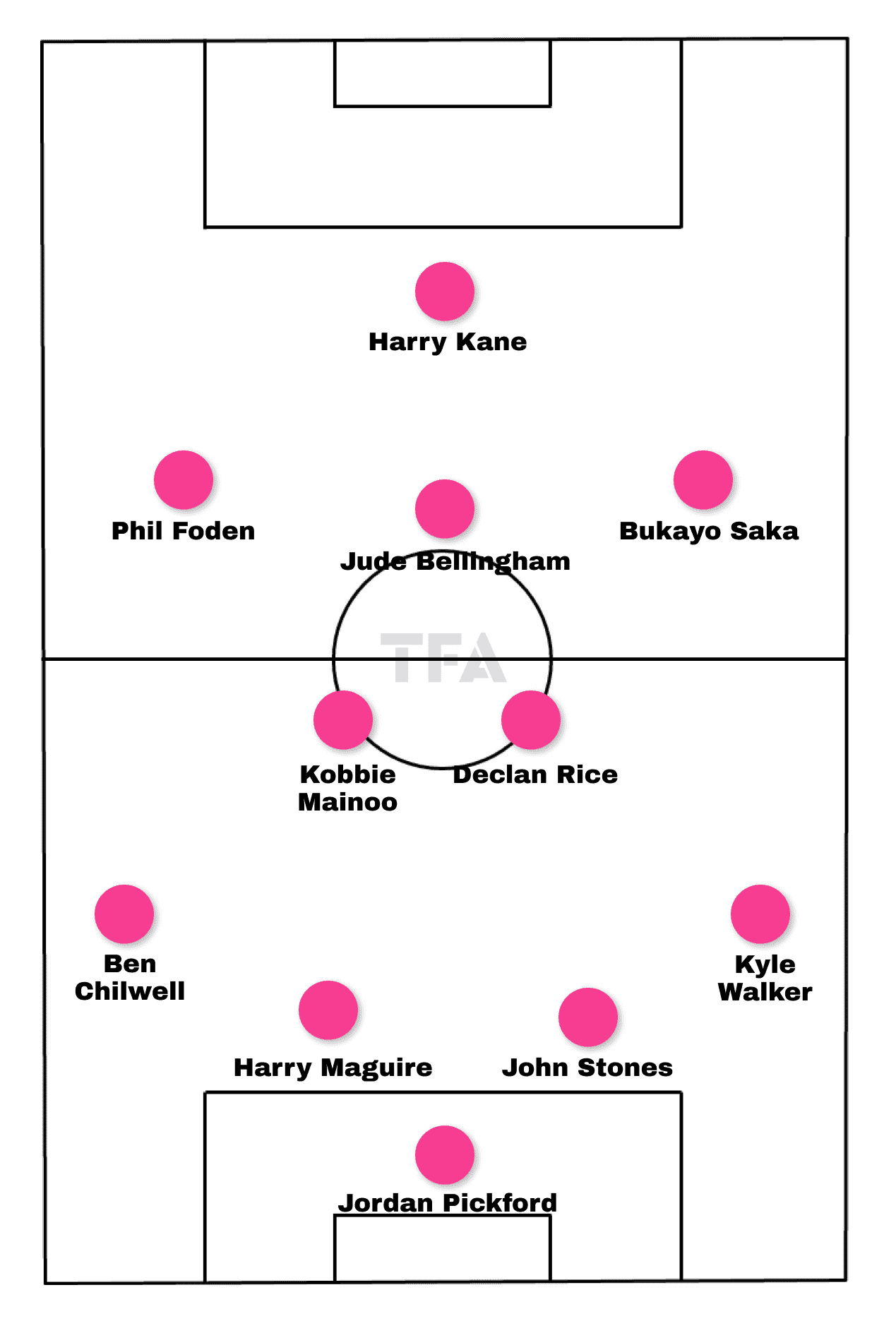
We need to start by pointing out the obvious and giving an insight into how these previews were put together.
The potential squad lists and starting XIs had to be put together prior to the final squad being announced.
The glaring issue is that we predicted Ben Chilwell to be playing at left-back, and the Chelsea man has not been named in the squad.
England will play in a 4-2-3-1 system this summer, with Jordan Pickford nailed on to play in goal.
Harry Maguire and John Stones are likely to remain the central defensive options, although Maguire’s lack of minutes at first-team level could threaten his position.
The biggest question leading up to the tournament and during qualification was what the midfield unit would look like.
While Declan Rice is coming off the best season of his career to date and is nailed on to play, the position alongside him was up for debate.
During his tenure, Southgate has remained loyal to the likes of Kalvin Phillips and Jordan Henderson, but neither of them have had strong seasons, and both have been left out of the squad.
The emergence of Kobbie Mainoo at Manchester United has helped to solve this issue, with the teenage midfielder already looking assured in his early England career.
In the frontline, we have seen Manchester United attacking player Marcus Rashford left out of the squad altogether, but he was unlikely to start regardless.
We believe that Southgate will start with Phil Foden and Bukayo Saka in the wide positions and Harry Kane through the centre.
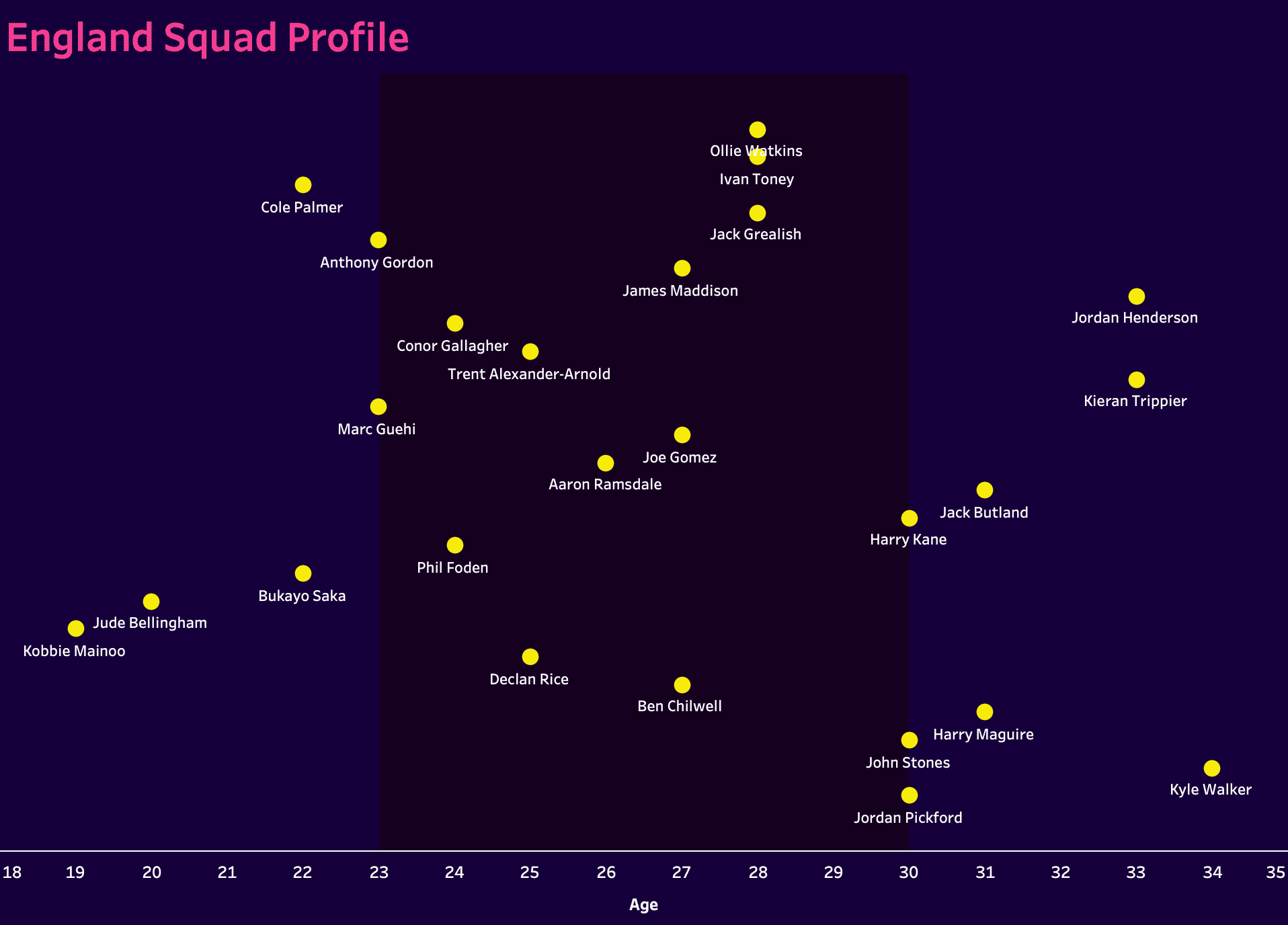
As we had originally predicted, the age profile for the England squad shows a real balance between those considered to be at their peak—between 23 and 30—and those who are pre-peak.
The likes of Kobbie Mainoo and Jude Bellingham are set to play key roles despite their youth.
England Attacking Phase
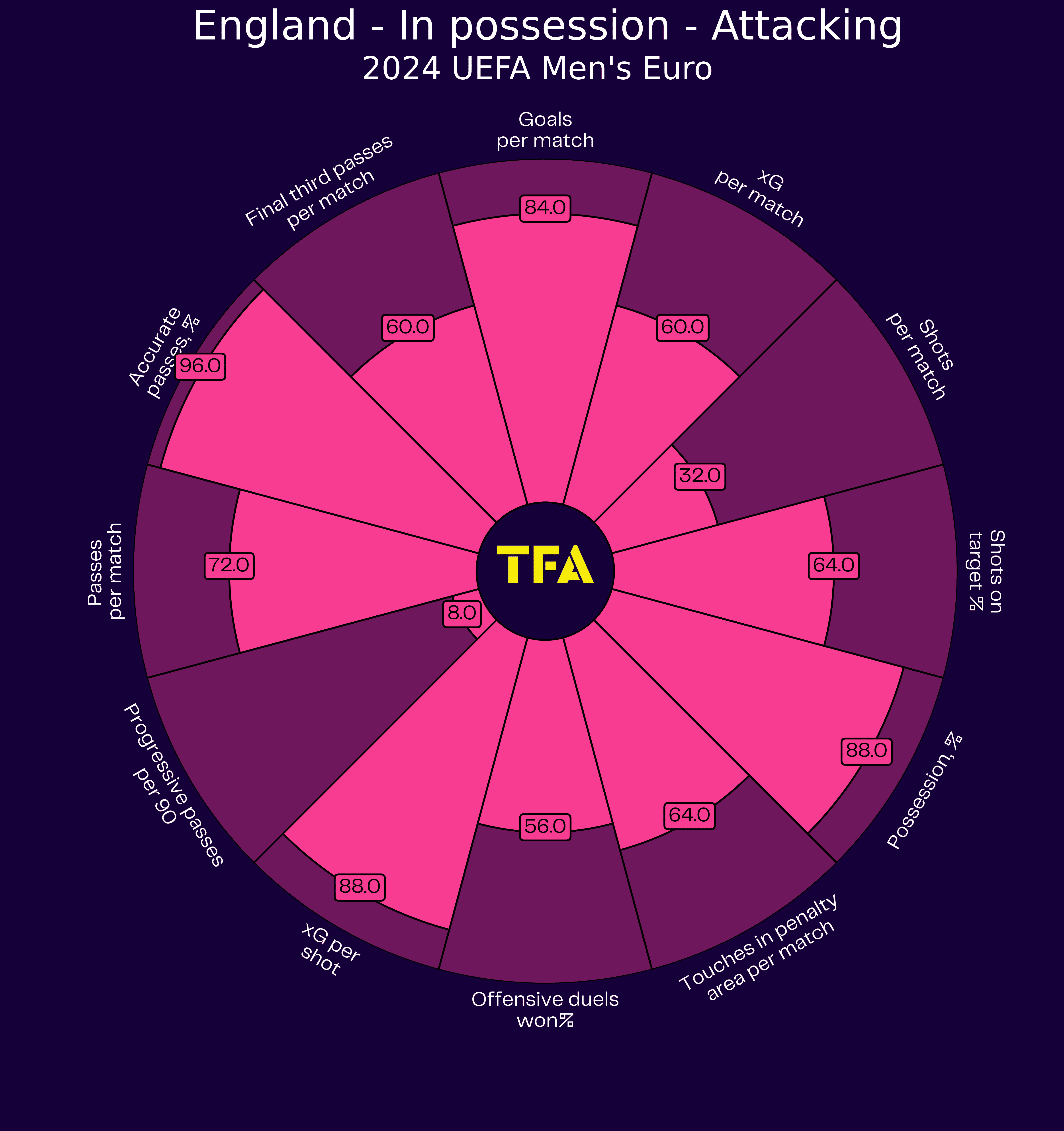
As you can see from this pizza chart, England are one of the strongest attacking sides as we approach the tournament.
This chart is created using data from all matches over the last calendar year, and it shows a side that are possession dominant that can, at times, be slow and careful in possession.
England create chances at a high rate and tend to be patient in creating shooting opportunities that yield a higher expected goals output.

In the established attacking phase, England are a dominant side that use their qualitative superiority over most opposition teams to dominate the ball.
Because it is typically so possession-dominant, England will push players high and into advanced areas, with both fullbacks and one of the two deeper midfielders usually pushing on and high.
The second midfielder, who does not take a high position, will provide security at the base of the attacking structure and allow England to reset and shift the angle of the attack where necessary.
In this example, we get a clear indication of how patient and dominant England can be in possession.
Scotland have been pushed back into a deeper defensive block as they look to defend the centre of their box.
Foden has initially taken possession wide on the far side and cut across before playing to Bellingham centrally.
The Real Madrid midfielder is comfortable on the ball in tight areas when under pressure, and he stays on the ball, and Foden uses this to make an incisive run from deep into the area between Scottish midfielders.
This run is then accessed by Bellingham.
Having players who are comfortable playing in tight areas centrally will be key for England in breaking down teams that want to sit and defend in a deeper defensive block.
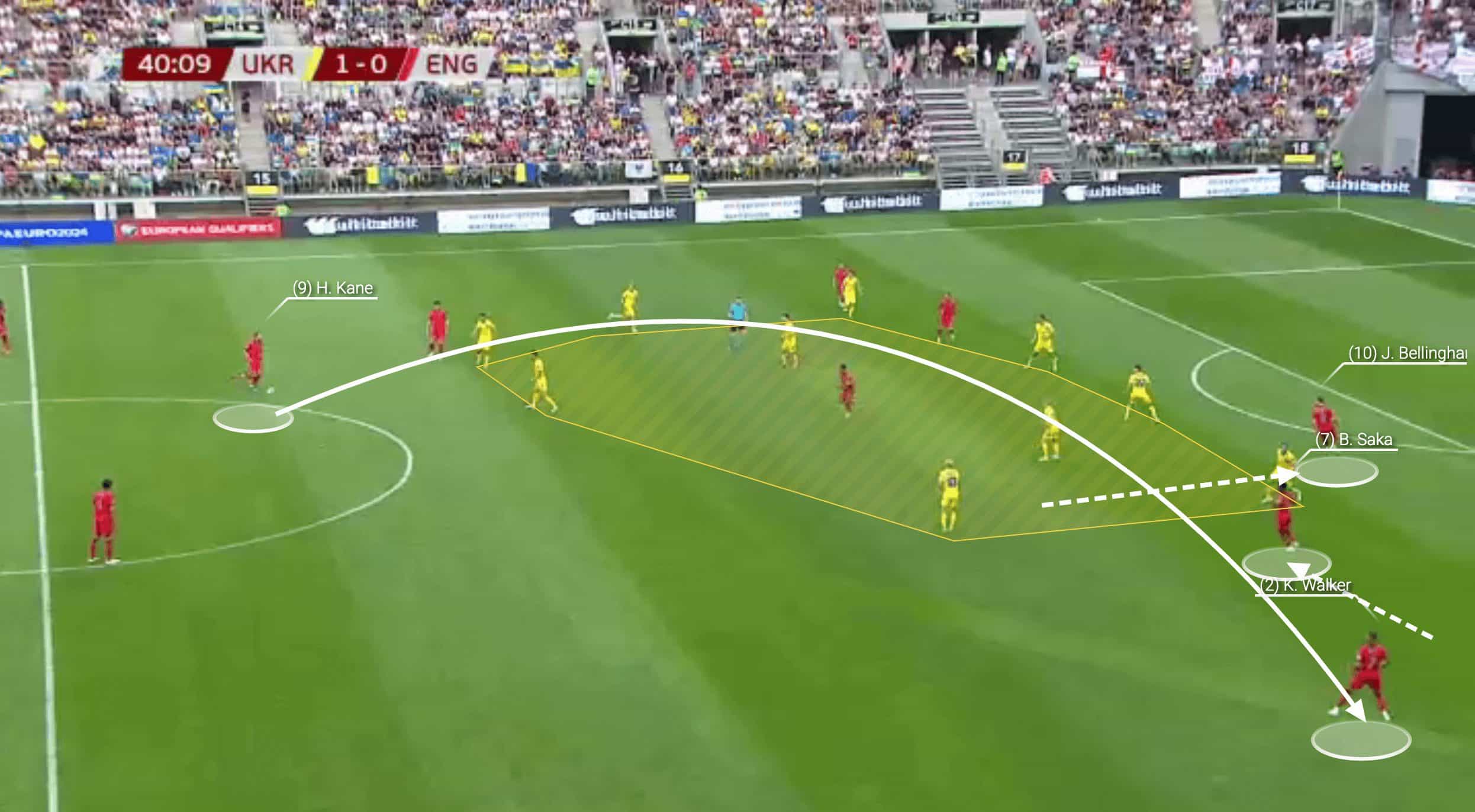
England’s possession-dominant nature and willingness to push players high and into attacking positions allow them to manipulate the opposition’s defensive block.
In this example, we see this in action in the match between Ukraine and England.
They will typically use intelligent movement to either force the opposition’s defensive block narrow or to attack space behind or on the outside.
This movement and occupation of space in the final third are really effective tools for England, given Harry Kane’s tendency to drop into deeper areas to get on the ball and effectively act as the playmaker in deeper areas.
In this example, Kane is the player in possession, and he has dropped from the highest line into the centre circle, just inside the opposition half.
Bellingham is the player who takes responsibility for making a run to attack space behind the defensive line and stretch the defensive line.
Bukayo Saka then makes a run from outside to inside to create space outside, and this is the position that Kyle Walker moves high to occupy.
These movements and rotations will create danger for the opposition because they empty space that can be exploited by players moving high from deep.
These rotations in high positions combined with the fact that England are possession dominant explain how dangerous England are going to be in this tournament.
England Defensive phase
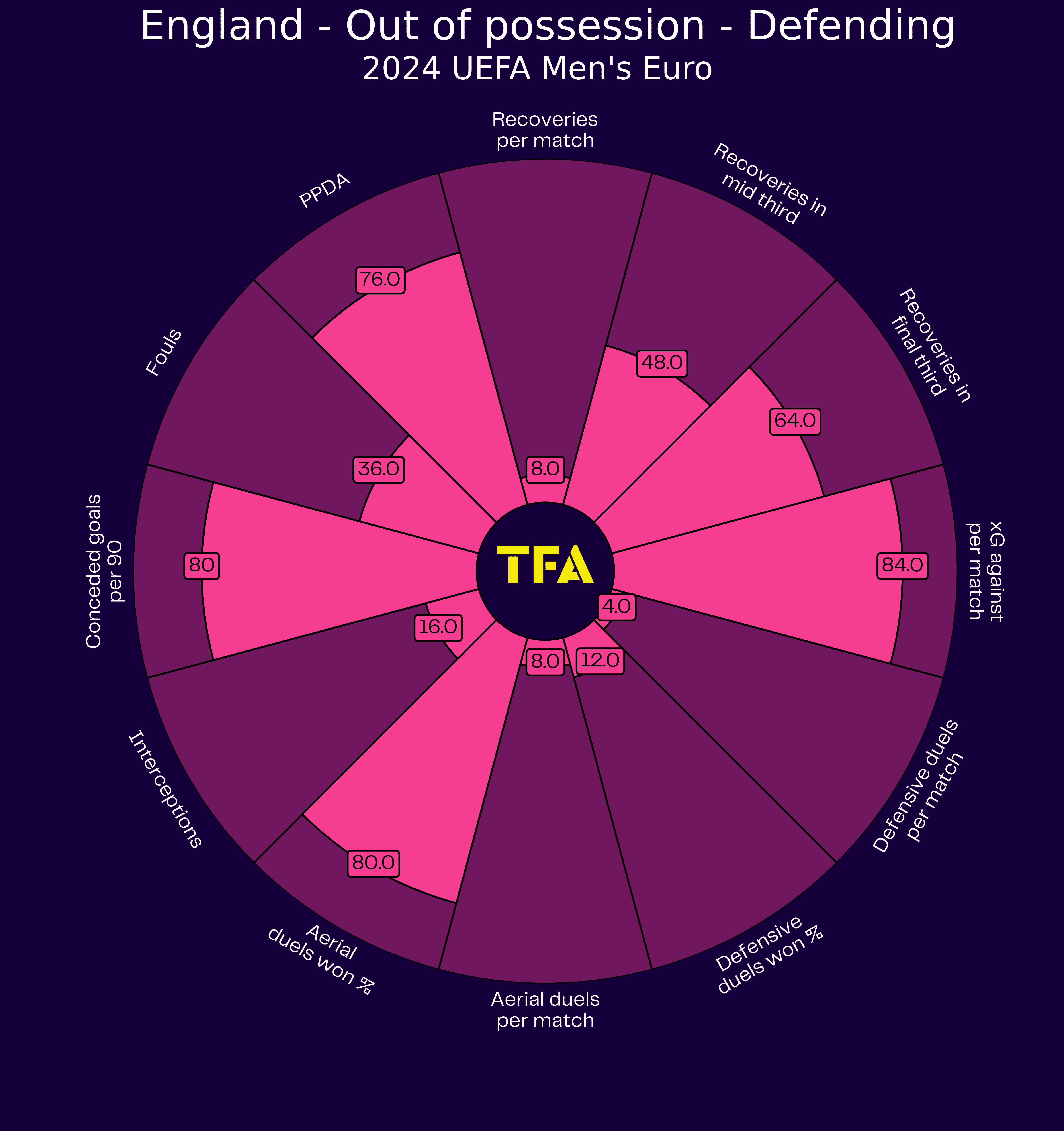
The defensive data for England over the last calendar year is slightly skewed because they have typically been so possession-dominant in their matches.
They press and work effectively against the ball, and when they are in the build-up phase, they will look to regain the ball high where possible.
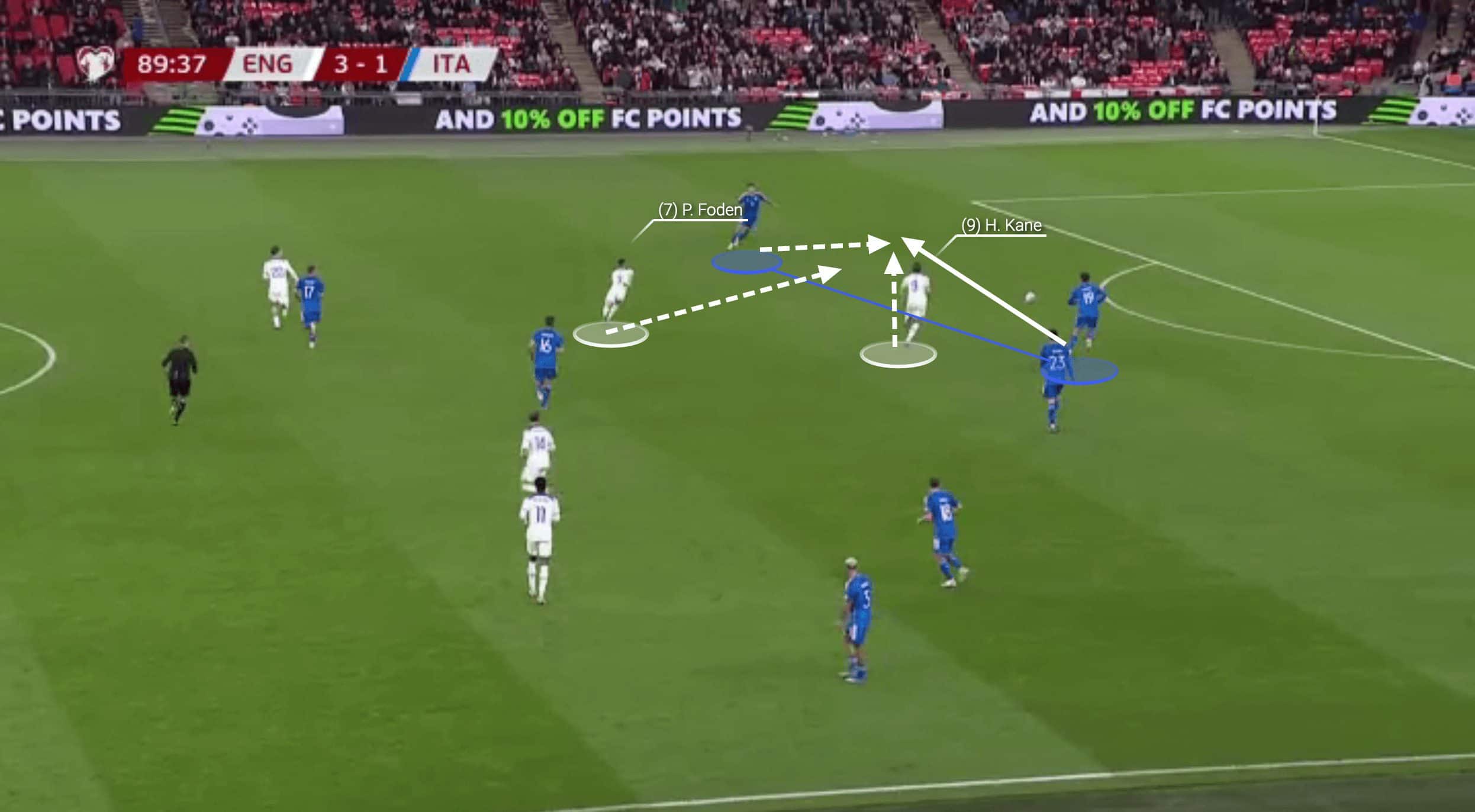
Harry Kane will typically work and press on his own in the first instance.
Despite being a top striker, his excellent work rate combined with his willingness to work and press from man to man across the opposition backline mean that England can work against the ball with a varied approach.
They can press high with aggression as a unit or allow Kane to slow and disrupt the opposition build-up as the rest of the defensive unit drops deep into a more compact and structured defensive block.
They are also capable of pressing in a more aggressive style as a unit.
In this example, we see Kane and Foden working together to try to regain the ball as high as possible in the match against Italy.
As Kane approaches and engages the Italian defender, the pass across is loose and behind the intended recipient.
At this point, we see Foden trigger to press and look to force the ball backwards.
It should also be noted that England were 3-1 up and they were in the 89th minute.
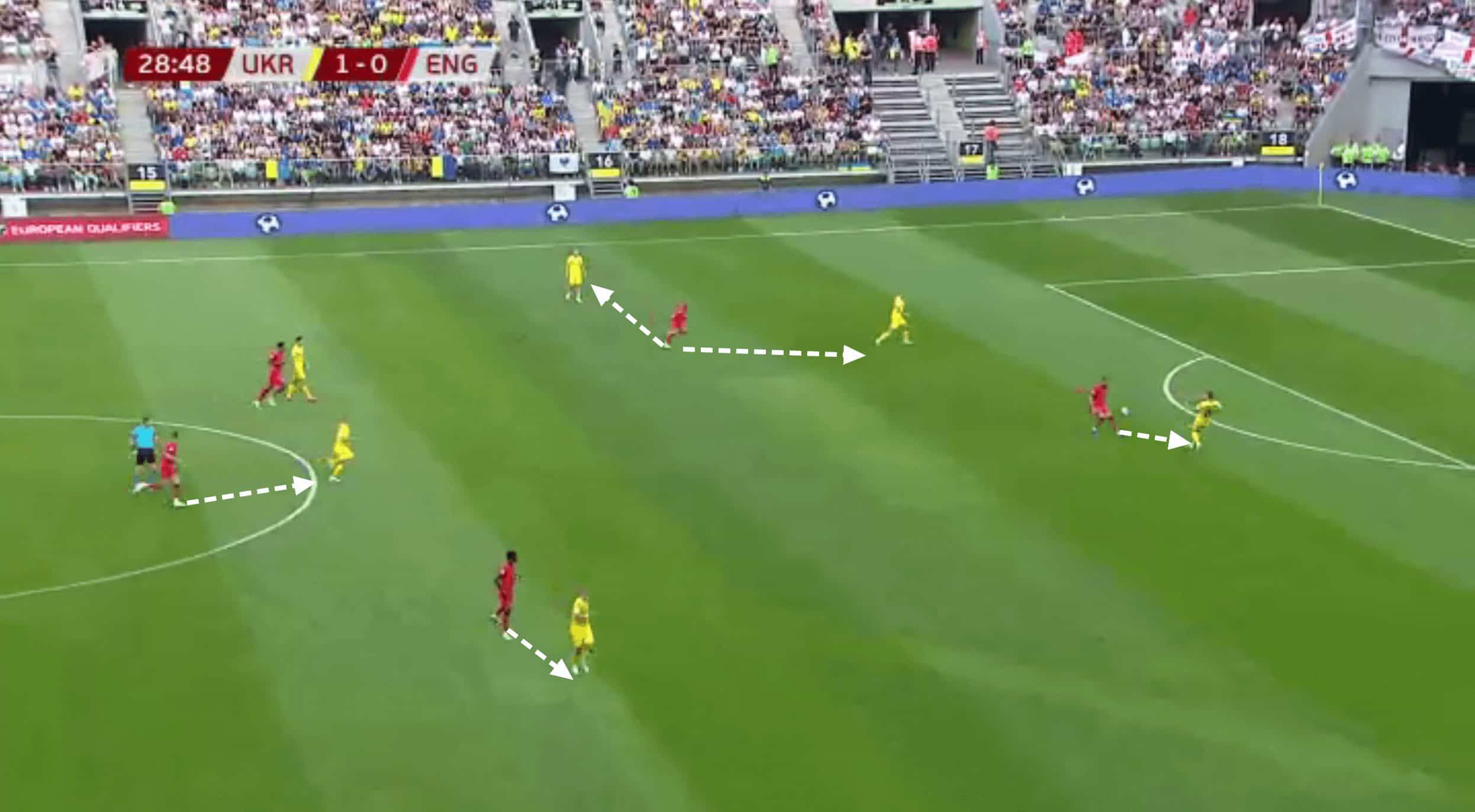
The varied defensive approach means that England can also, at times, look to work and press in a man-to-man structure against the ball.
We can see an example of this in the match between England and Ukraine a few months ago.
Ukraine had possession of the ball deep, and the man on the ball was being pressed by Kane on the highest line.
As you can see, the next four players for England have picked up players in a man-to-man structure.
Using this kind of defensive shape and structure, England can effectively choke the opposition and create opportunities to regain possession of the ball as close to the opposition’s goal as possible.
England Transitions
As we have already discussed above, England are a patient and possession-dominant side when they are in the attacking phase.
While in moments of transition from defence to attack, they can play directly to look to release pace in the wide areas, they are more likely to look for attacking players who are positioned in pockets of space or between the lines to build the attack in a more controlled way in transition.
Both Phil Foden and Bukayo Sako, in particular, will thrive when they are free to drop into spaces between the lines or away from opposition defenders to find platforms to receive the ball.
These movements away from defenders into pockets of space enable England to play more progressively in terms of their passes in transition.
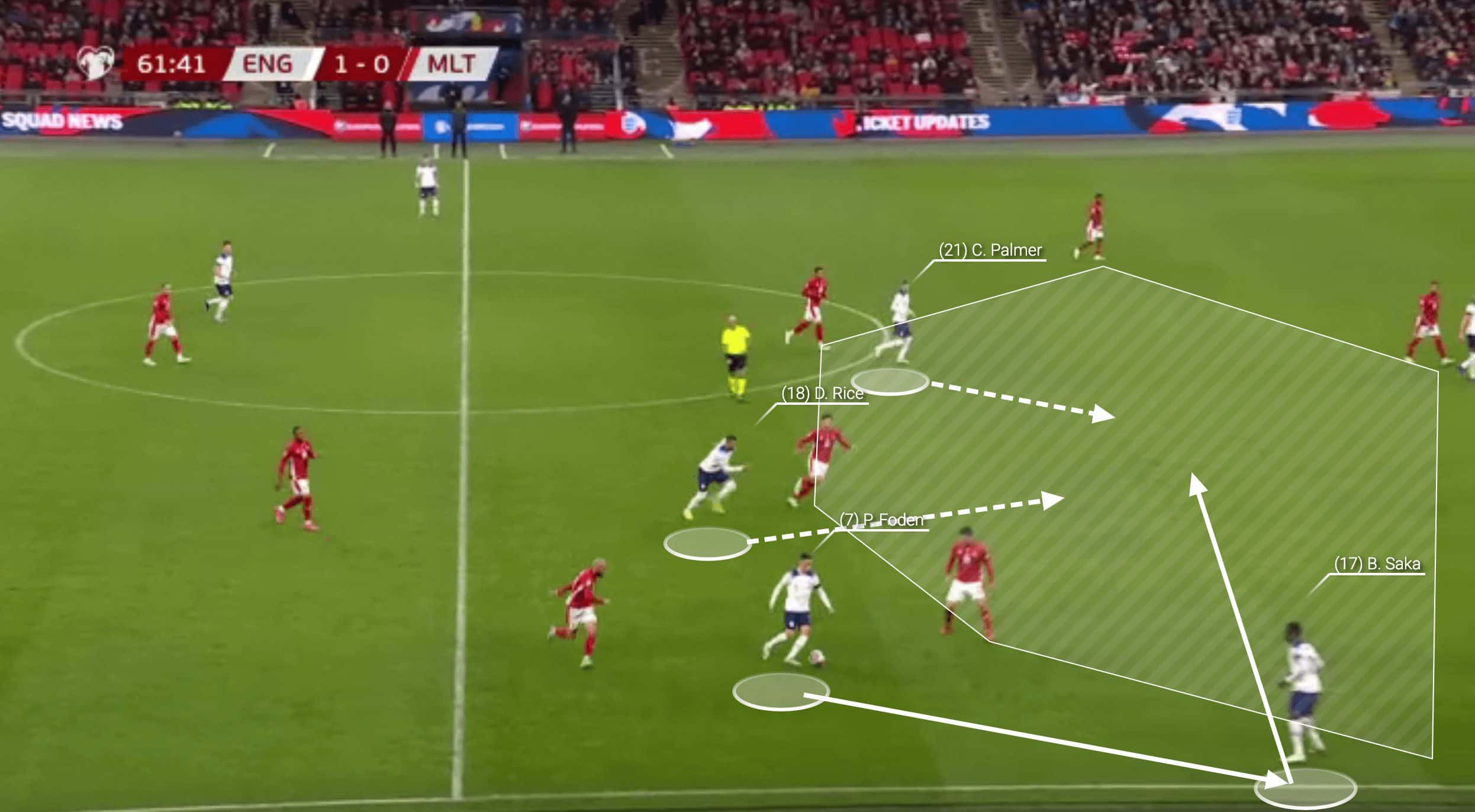
In this example, England just regained possession from Malta in a recent match.
Saka is often the first pass for England in moments of transition, and when he receives the ball in pockets of space like this, he is a threat to open out and drive in possession, play on limited touches, and look for passes to release teammates into space.
Here, as Saka receives the ball in the wide area, he is not under immediate pressure, but he still understands that the space to exploit is inside.
As Rice and Palmer make runs to attack the pockets of space, England are able to attack into the final third.
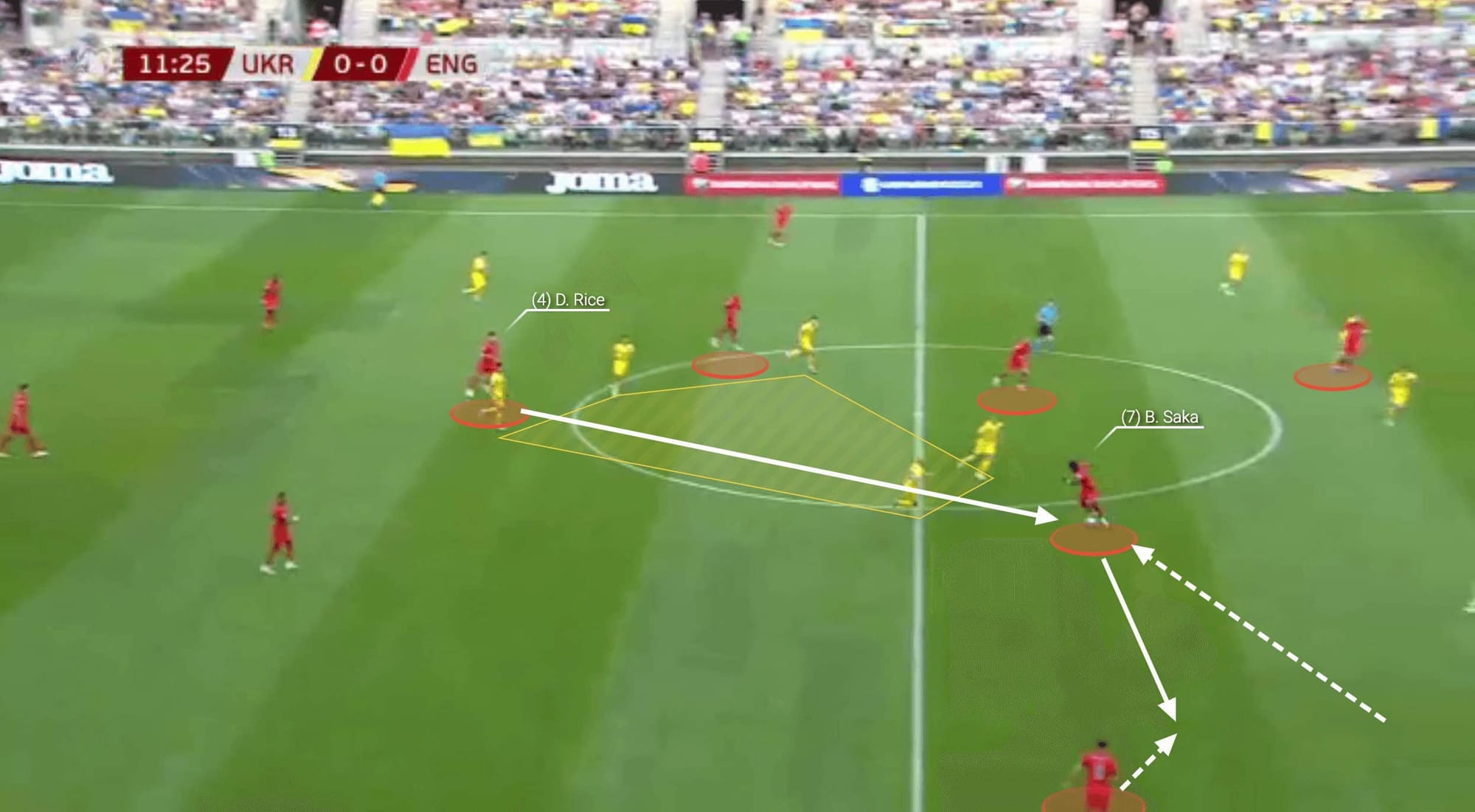
Saka is an incredibly intelligent footballer who enables teammates to play progressive passes that break the lines and bring others into the game.
He will regularly receive line-breaking passes that help his team attack into the opposition half and into the final third.
In this example, we see his movement from outside into the half-space, still just inside the opposition half; as Rice regains possession of the ball, Saka makes his run inside to occupy space, and his Arsenal teammate is able to break the lines to play through five opposition players to find the feet of Saka.
The Arsenal wide player then links a pass to release his teammate into space.
This summer, Rice and Saka’s movement and intelligence, which they have developed an incredible understanding of at club level, will be one of the keys for England in this tournament.
England will not, however, be a team that looks to attack in direct transitions.
Instead, they will work to transition in a patient and controlled manner to move the ball through the thirds.
England Forwards
Southgate has been keen to provide plenty of options in the forward line in his provisional squad, but his first-choice front line is likely to be stable: Harry Kane, Phil Foden, and Bukayo Saka.
In terms of backups to Kane, we have seen Southgate call up Ivan Toney and Ollie Watkins to provide cover and a challenge.
For the wide areas, Anthony Gordon and Jack Grealish play from the left side to provide competition for Foden, while on the right side, Jarrod Bowen, Eberechi Eze and James Maddison can play from the right side.
England Midfielders
Declan Rice, Kobbie Mainoo, and Jude Bellingham will play as the first-choice midfielders, but there is cover behind them.
Adam Wharton, Trent Alexander-Arnold, Conor Gallagher, and Curtis Jones can play in the midfield unit, while Cole Palmer and James Maddison can also play in the midfield unit.
England Defenders
The squad’s left-back position is still a huge question mark, as is Luke Shaw’s fitness.
Kyle Walker will start at right-back, and John Stones and Harry Maguire will be at centre-back.
Jarrad Branthwaite and Marc Guehi have been called into the squad as younger options alongside Liverpool youngster Jarell Quansah, while Lewis Dunk of Brighton provides a more experienced option.
England Key Player
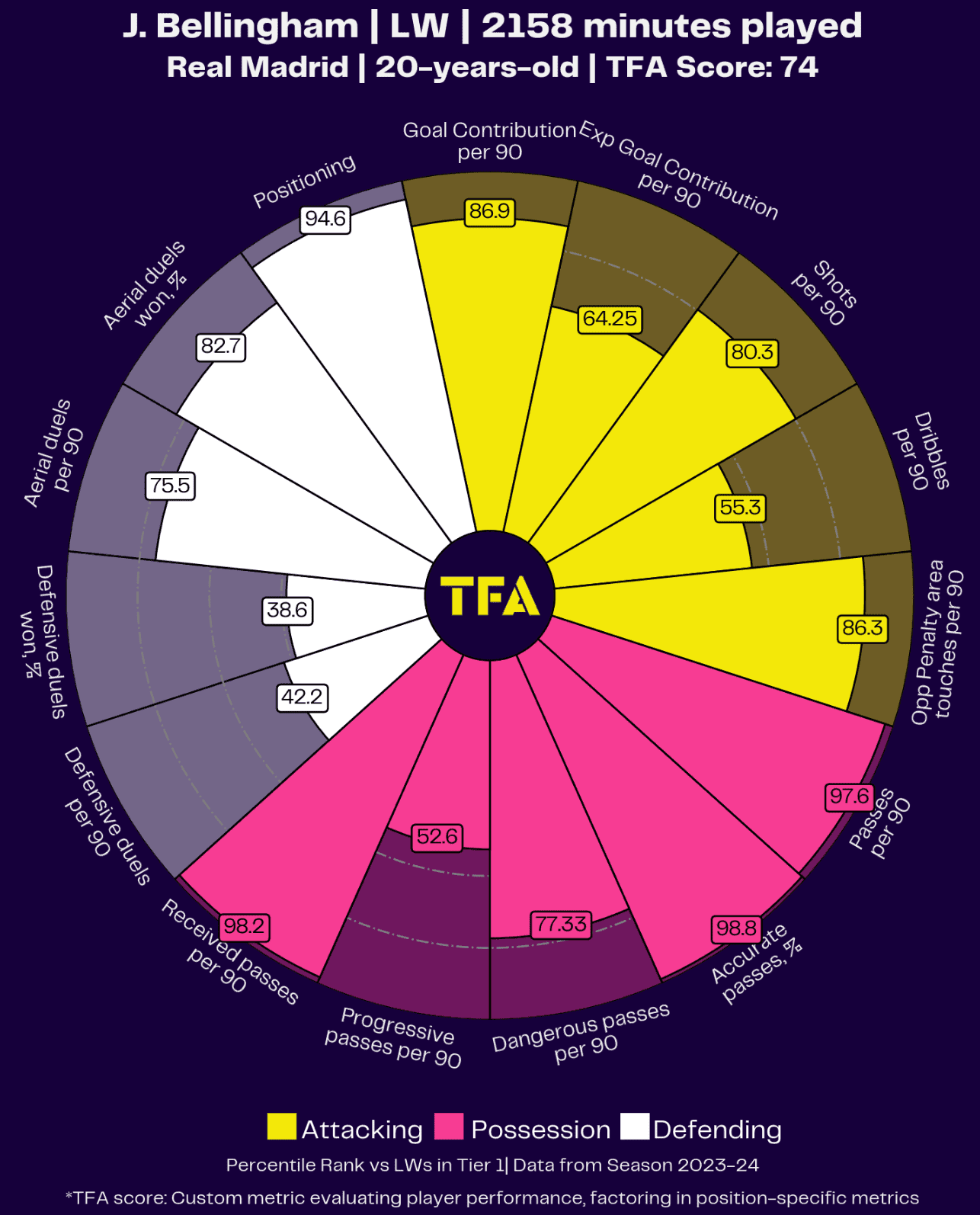
This was the first tournament for England in some time when we did not consider Harry Kane their key player.
While the Bayern Munich striker will still be extremely important as a goal threat and a creator this summer, we believe that Jude Bellingham will be the key to England’s success.
Since moving last summer to Real Madrid, we have seen the 20-year-old English midfielder go from strength to strength.
As you can see from his pizza chart, he has had a strong season in La Liga, with notable outputs in terms of his attacking contributions and the way that he works in passing and progression.
As the 10 in the English 4-2-3-1, Bellingham will act as the advanced pivot, receiving the ball and bringing others into the game.
He will also bring a goal threat with his willingness to break into the opposition area.
England Tournament Prediction
Given that this is likely to be Southgate’s final tournament in charge of England, it is fair to say that anything other than victory will be seen as a failure.
Their opponents in Group C, Slovenia, Serbia, and Denmark will provide tricky but not insurmountable opposition.
Once England is out of the groups and into the knockout stages, anything is possible.
They have goals and creativity throughout the squad, but there will still be question marks about their ability to perform defensively.

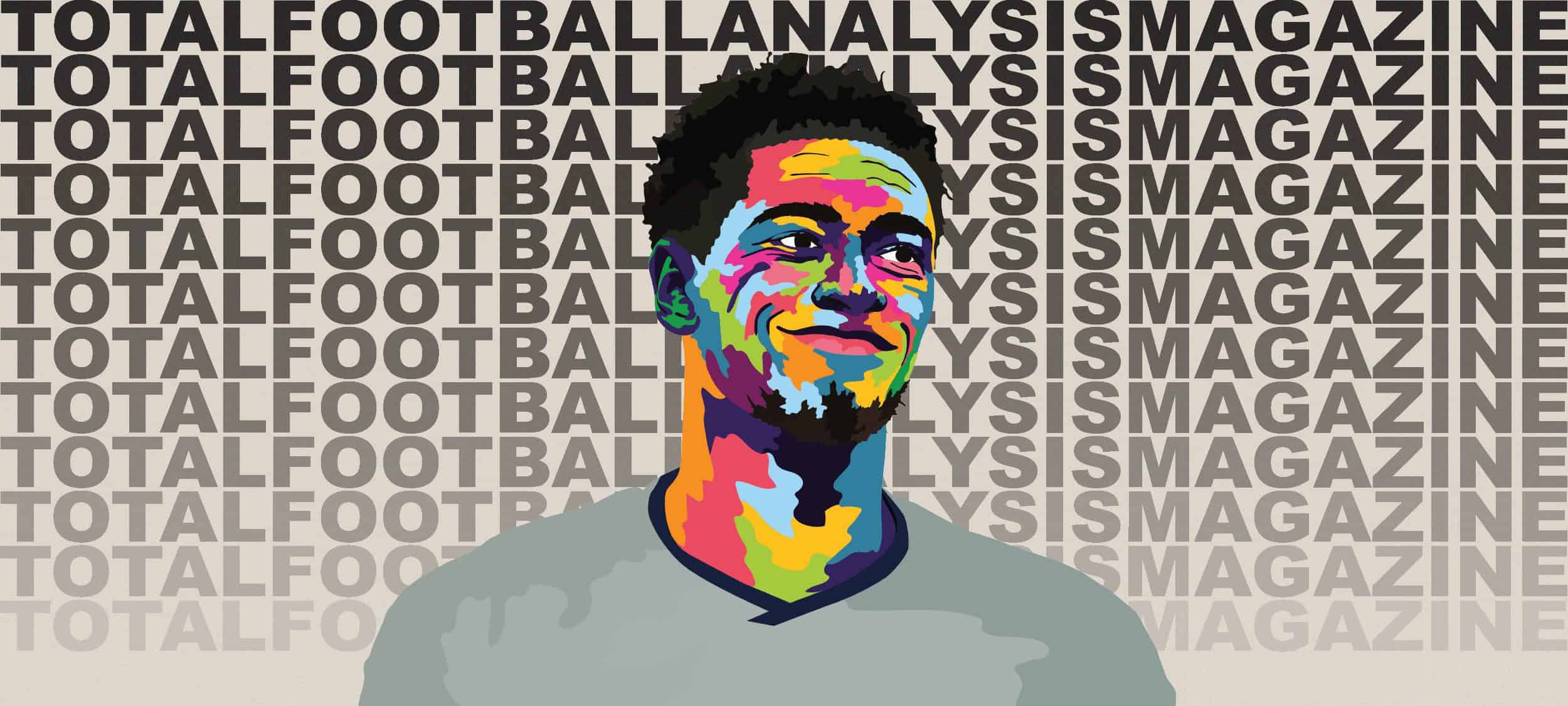




Comments